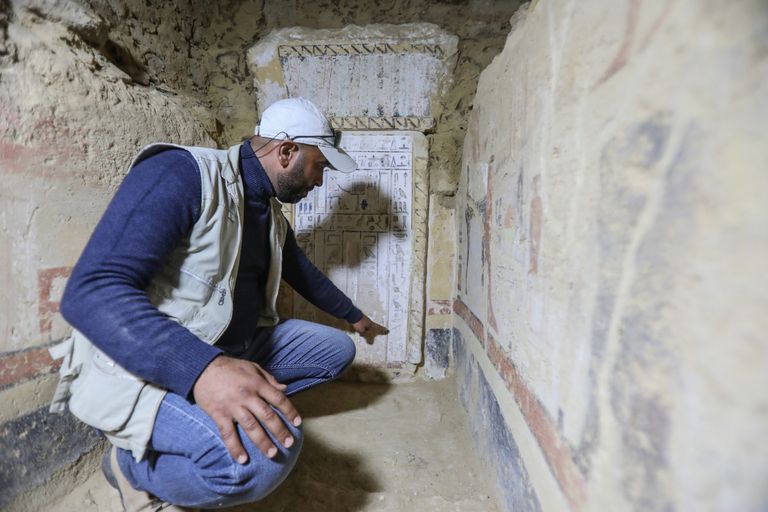A Mummy Uncovered In An Ancient Egyptian Tomb Had A Strange Feature That Astonished Archaeologists
Legendary archaeologist Zahi Hawass is in the ancient Egyptian necropolis of Saqqara, and he’s just about to make another stunning find. Helped by his team members, he carefully lifts the massive lid of a stone sarcophagus that dates back more than 4,000 years. What he discovers inside — along with other incredible finds from a year-long excavation — will finally be revealed at a press conference in January 2023. And it will thrill people around the world.
A dozen pyramids
The Saqqara burial complex has provided a rich harvest of ancient tombs and artifacts for archaeologists such as Dr. Hawass over the years. The site, which extends for some 5 miles, is set on the edge of the desert about 20 miles to the south of Egypt’s modern capital, Cairo. As well as the many tombs, there are more than a dozen pyramids at Saqqara.
The Step Pyramid
The most famous of the monumental structures at Saqqara is the Step Pyramid. The Pharaoh Djoser built this impressive edifice in the 27th century B.C. during the ancient Egyptian era known as the Old Kingdom. Historians say that this was the pyramid which started the custom of Egyptian rulers building these impressive structures as huge mausoleums for their own use after death.
Looters
Saqqara, which enjoys Unesco World Heritage designation, is now a highly prized archaeological site that’s an important part of Egyptian nationhood and identity. But it was not always that way: for many years, the underground complex of tunnels and tombs was raided by looters searching for valuable antiquities, with some even using ancient mummies as fertilizer. In the 19th century, tourists rifled through the tombs for artifacts to take home.
Auguste Mariette
In fact Saqqara, despite its archaeological riches, was always and continues to be a secondary attraction, sitting behind the famous tombs of Luxor 300 miles to the south and the nearby Great Pyramids at Giza. The ancient necropolis was largely ignored in terms of serious study until 1850. That was when a French archaeologist called Auguste Mariette came on the scene. He was a founder and the first director of the Egyptian Antiquities Service.

